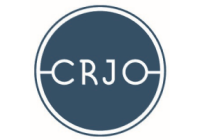Understanding the economic role of Canberra Region Joint Organisation area provides a framework for understanding what policy responses and investment may be appropriate to support the growth of businesses and maintenance of a vibrant economy in the future.
The charts and table below give a broad overview of the role and function of your economy. It helps answer questions such as:
- How much of the Canberra Region's economy is driven by meeting the local population needs?
- What proportion of jobs in the area are in goods production or selling of products?
- In which broad sectors are the key strengths of the local economy?
- What contribution do business services make in your area and is it growing?
- Is there a presence of local, state and federal government workers in in the area?
Once you have developed a broad picture of your economy, you can then drill down further with all the detail here.
Current area:

| Employment composition | ||||||
|---|---|---|---|---|---|---|
| Canberra Region | 2023 | 2017 | 2012 | |||
| Industry | number | % | number | % | number | % |
| Agriculture, forestry and fishing | 10,150 | 5.7 | 10,576 | 7.4 | 10,509 | 7.6 |
| Mining | 1,013 | 0.6 | 727 | 0.5 | 567 | 0.4 |
| Goods related | 69,374 | 38.7 | 50,527 | 35.2 | 52,030 | 37.7 |
| Household services | 67,056 | 37.5 | 54,618 | 38.1 | 49,239 | 35.7 |
| Business services | 18,706 | 10.4 | 16,275 | 11.3 | 15,292 | 11.1 |
| Public administration and safety | 12,754 | 7.1 | 10,796 | 7.5 | 10,479 | 7.6 |
| Total Industries | 179,053 | 100.0 | 143,519 | 100.0 | 138,116 | 100.0 |
Source: National Institute of Economic and Industry Research (NIEIR) ©2024. ©2023. Compiled and presented in economy.id by .id (informed decisions). Data are based on a 2020-21 price base for all years. NIEIR-ID data are inflation adjusted each year to allow direct comparison, and annual data releases adjust previous years’ figures to a new base year.Learn more. Please refer to specific data notes for more information | ||||||
